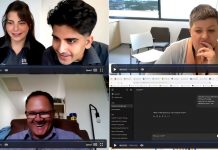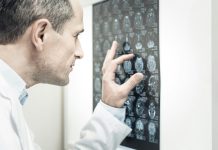
Most stroke victims don’t receive treatment fast enough to prevent brain damage.
In a new study, researchers developed technology to “retrain” cells to help repair damaged brain tissue after stroke.
They used a processed called tissue nano transfection to introduce genetic material into cells.
This allows them to reprogram skin cells to become something different—in this case vascular cells—to help fix damaged brain tissue.
It’s an advancement that may someday help patients regain speech, cognition and motor function, even when administered days after an ischemic stroke.
The research was conducted by scientists at The Ohio State University.
Every 40 seconds, someone in the United States suffers a stroke.
It’s the second-leading cause of death worldwide, and those who survive often have irreversible brain damage resulting in paralysis, speech impairment and loss of motor function.
No treatments exist to address the lasting and debilitating damage to brain tissue caused by stroke.
Although medical advancements have allowed doctors to clear clots in the brain faster and improve outcomes, this is only effective if done within a few hours of the stroke, before the brain tissue dies.
About 80% of ischemic stroke patients don’t receive the clot-busting therapy in time to prevent permanent deficits in their speech, cognition, and motor function.
In this study, cells were ‘pre-conditioned’ with specific genes and injected into the stroke-affected brains, where they promoted the formation of new blood vessels via reprogramming and the repair of damaged brain tissue.
The team studied the process in mice and found that those treated with this innovative cell therapy regained 90% of their motor function.
MRI scans showed damaged areas of the brain were repaired within a few weeks.
The team says that there could be opportunities to regenerate cells to restore brain function.
They continue to study this approach, and they’re also exploring other potential uses for this technology to treat brain disorders such as Alzheimer’s and autoimmune diseases.
The study is published in Science Advances. One author of the study is Daniel Gallego-Perez.
Copyright © 2021 Knowridge Science Report. All rights reserved.



